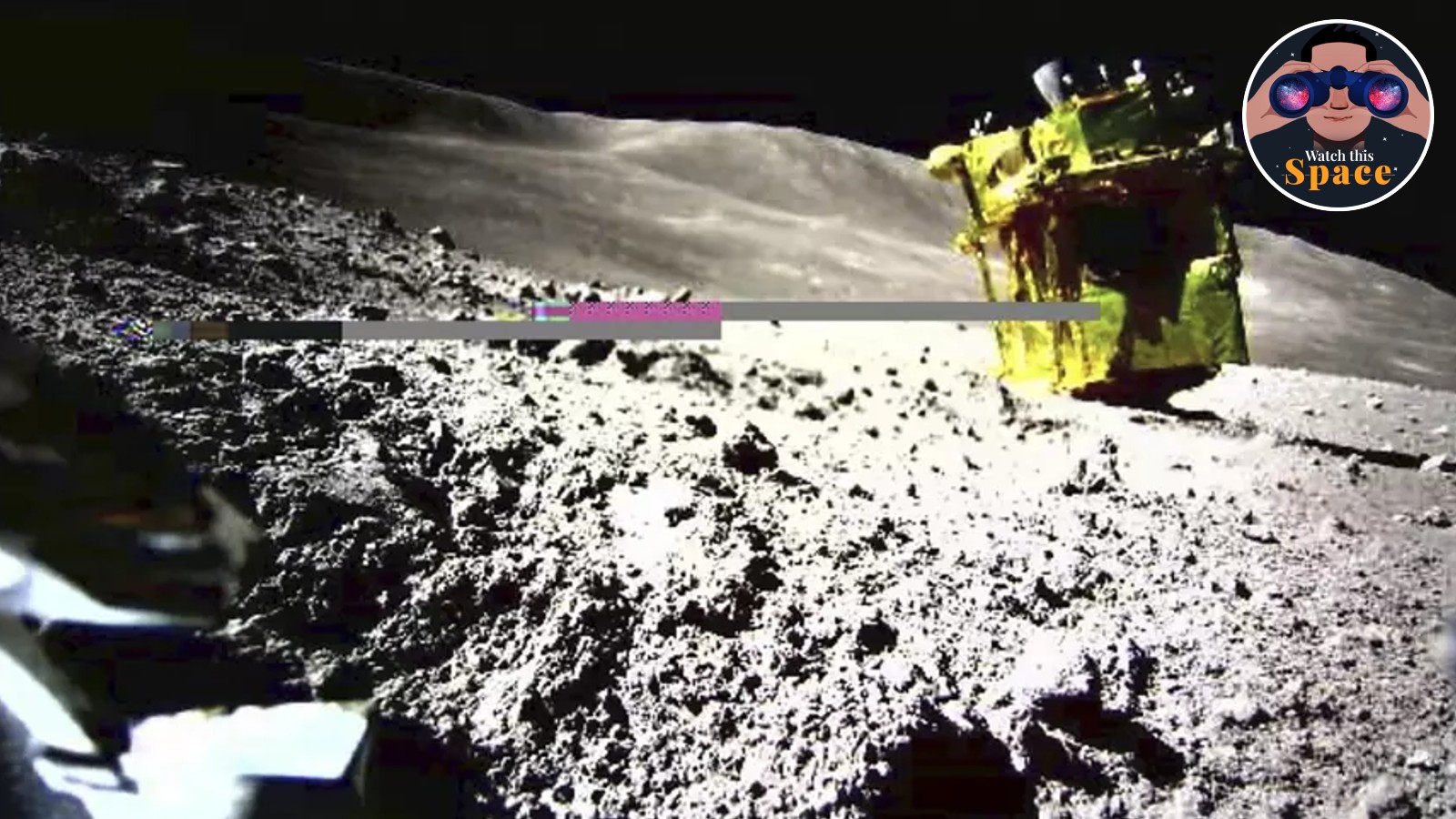Watch this space: SLIM chances of survival and drugs in space
While India's Chandrayaan-3 succumbed to the lunar night, Japan's SLIM lander defied the odds, surviving two harsh lunar nights thanks to its unexpected resilience and drugs manufactured in space could revolutionize healthcare.
 Photo of the moon captured by SLIM (Image credit: SLIM_JAXA)
Photo of the moon captured by SLIM (Image credit: SLIM_JAXA)ISRO’s Chandrayaan-3 was designed to survive one lunar day or about 14 days on Earth. This is because temperatures on the Moon can go more than a hundred degrees below freezing during the harsh lunar night. And as expected, Chandrayaan-3 did not survive the night on Earth’s lone natural satellite. But this week, the Japan Aerospace Exploration Agency announced that its SLIM lander was able to do that not once but twice.
When SLIM touched down on the Moon, it made Japan the fifth country in the world to soft-land a spacecraft on the Moon after the Soviet Union, the United States, China, and India. But SLIM did not exactly land perfectly. The “Smart Lander for Investigating Moon” actually landed on its nose and created what is arguably one of the most iconic space photos of the year.
 Japan Aerospace Exploration Agency’s Smart Lander for Investigating Moon, or SLIM (Image credit: JAXA)
Japan Aerospace Exploration Agency’s Smart Lander for Investigating Moon, or SLIM (Image credit: JAXA)
Landing on the nose not only makes for a hilarious picture but it is also bad for the spacecraft — its solar arrays were designed to harvest sunlight when the probe is the right way up. This meant that the 200-kilogram lander went dark shortly after its initial landing because it was not able to generate enough energy to keep going. But it came back online a few days later, able to gather science data.
Then, after a few days, scientists put it in hibernation mode. At this point, the mission had already completed its primary objectives — demonstrate JAXA’s soft lunar-landing capabilities, deploy two rovers and collect science data. While scientists at the Japanese space agency held hope, most expected the lander’s life to fizzle out in the lunar night. Usually, this happens as a result of instruments being frozen over to the point of malfunction. But that was not the case with SLIM.
昨晩は少し温度が下がったため先日撮影した航法カメラのデータを無圧縮で受信しました。遠方の十字配置のクレーターまでは約7km、その後ろの山までは約29kmあります。大気によるかすみがないことや地平線までの距離がことなることから距離感が地球とだいぶ異なります。 pic.twitter.com/Q54k77l7tR
— 小型月着陸実証機SLIM (@SLIM_JAXA) March 29, 2024
The hardy lander went on to survive that lunar night and came back online when the Sun began shining at the spot on the Moon where it was. Not only that, but it went on and did the same thing again, surviving a second night of darkness and frozen temperatures. And remember, both these nights lasted around 14 Earth days.
The month after SLIM landed on the Moon, something interesting landed on Earth — a capsule containing the drug ritonavir, commonly used to treat HIV. What is special about this particular drug was that it was manufactured in space by an autonomous in-space manufacturing platform designed and developed by California-based Varda Space Industries. To put in the words of Varda cofounder Delian Asparouhov, “them space drugs cooked good.”
But what is the point of manufacturing drugs in space when rocket launches and returns from space are so expensive? Wouldn’t it be better to just make them on Earth as we already do?
Well, to begin with, in the distant future, when humanity is looking to explore regions of space beyond the Moon, like Mars and other planets, it will not necessarily be practical to depend on Earth-manufactured drugs for astronauts.
For example, a journey from the Earth to the Moon will take at least six to seven months with the technology that we currently have. Now if you think about other destinations in deep space, you can multiply that number many times. In short, our chances of becoming a spacefaring civilisation hinge on our ability to manufacture drugs and other essentials in space.
But there is a more pressing potential application for space medicines. There is a reason why drug companies have been sending protein crystallisation experiments to the International Space Station for decades.
Crystallisation is the keyword. How the crystals in the active ingredient of a drug are formed can have a massive impact on its behaviour. And as you may have guessed, some kinds of crystallisation are much easier in space than they are on Earth.
In a 2019 experiment on the International Space Station, Merck’s cancer drug Keytruda was synthesised in orbit, proving that it was possible to make a stable crystal form that could be delivered with an injection and can be stored at room temperature. This is especially interesting when you consider that the Earth-made version needs refrigeration and can only be delivered through an IV drip.
And remember, this is just a start. Scientists are just beginning to understand the various benefits of manufacturing drugs in space. So, “cooking space drugs” could soon be the future cutting edge of medical science, provided we find a way to do it in a viable manner to produce a drug that people can actually afford. Because remember, you cannot do anything in space without a bill that runs into the millions and often billions of dollars.







